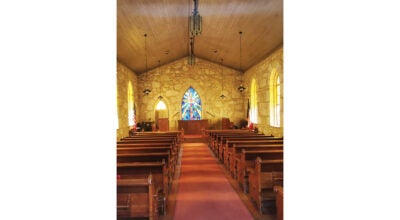Residents discuss property concerns at public hearing
Published 5:00 am Friday, September 22, 2006
A proposed ordinance to limit the appearance and size ofauxiliary buildings on private property was taken off the table bythe Brookhaven Planning Commission Thursday following awell-attended public hearing.
“We’re not going to do what we started to do. That’s clear,”said committee member Lu Becker after the hearing. “Our goal is notto restrict citizens so that they can’t enjoy their property, butto improve the appearance for the whole community.”
The proposed ordinance would have limited accessory structuresto 20 percent of the square footage of the footprint of the mainbuilding and required the structures be made of “compatible”building materials. A footprint is the amount of surface area on aproperty consumed by a structure.
A second, and related, ordinance would have extended the firstordinance to include any additional adjoining property.
An existing ordinance does not place any limits on appearance,but limits size by stating that the combined footprint of the mainstructure and any secondary buildings may not exceed 35 percent ofthe surface area of the lot, said Steve Melancon, a committeemember.
Planning Commission Chairman Mike Clark said after the hearingthat it was obvious to the committee that they had more work to dobefore they could update the existing ordinance. Based upon whatthey heard during the hearing, Clark said the next step is forcommittee members to review both the appearance and sizelimitations on the proposed ordinance.
Planning commission members heard Thursday from a variety ofcitizens and public officials who provided several differentviewpoints to both elements of the proposed ordinance.
One issue that surfaced repeatedly was the right of propertyowners to construct secondary buildings of a size and number tomeet their needs.
“I’m afraid we’re getting to the point that people can’t buildwhat they want on their property,” said John McClendon. “I’m afraidwe’re getting too restrictive.”
Clark countered that the proposed ordinance was the result ofcomplaints by citizens about declining property values becauseneighbors had built monstrously large or ugly structures on theirproperty.
“There’s some feeling there’s not enough controls in someareas,” he said.
Ward Four Alderwoman Shirley Estes said rights are a sharedcommodity.
“The property owner has rights, but their neighbors have rights,too,” she said.
Most of the citizens at the hearing expressed concern about theproposed size restrictions.
Mayor Bob Massengill also said the size may be too limiting, butpraised the commission members on their efforts.
“While 20 percent may be too small, I like the fact there may besome restrictions size-wise,” he said.
Resident James West also said the proposal was too restricting.He suggested a maximum footprint on a secondary building as 75percent of the main building.
“You really need to think about what this will do in thefuture,” West said.
West said it would be possible, especially on large lots, forproperty owners to maximize construction on their property underthe proposal and still have large tracts of land that would then beuseless to them.
Several attendees said they owned motor homes, and therestrictions would be too small for them to build structures forthe vehicles without seeking a variance and paying the $400fee.
When the hearing segued into appearance, Estes said she believedthe ordinance may be too vague on what could be considered”compatible.”
“That’s one problem with compatibility – compatible lies in theeye of the beholder,” she said. “That’s the misunderstanding.Compatibility just means harmony.”
She suggested colors, if not building materials, might besufficient to meet the compatibility requirements.
Clark said the restrictions on appearance seemed to be the mainissue of objection among citizens, but Becker disagreed.
“I believe our main problem is restrictions at all. That’s whatI’m hearing,” she said.
Ernie Clark, a resident and local developer, praised thecommittee for its efforts on the ordinance, but added that by doingso they have committed to an action that will not make them friendson either side of the issue.
“I really don’t think there’s a (compromise) solution that willmake everyone happy,” he said.





